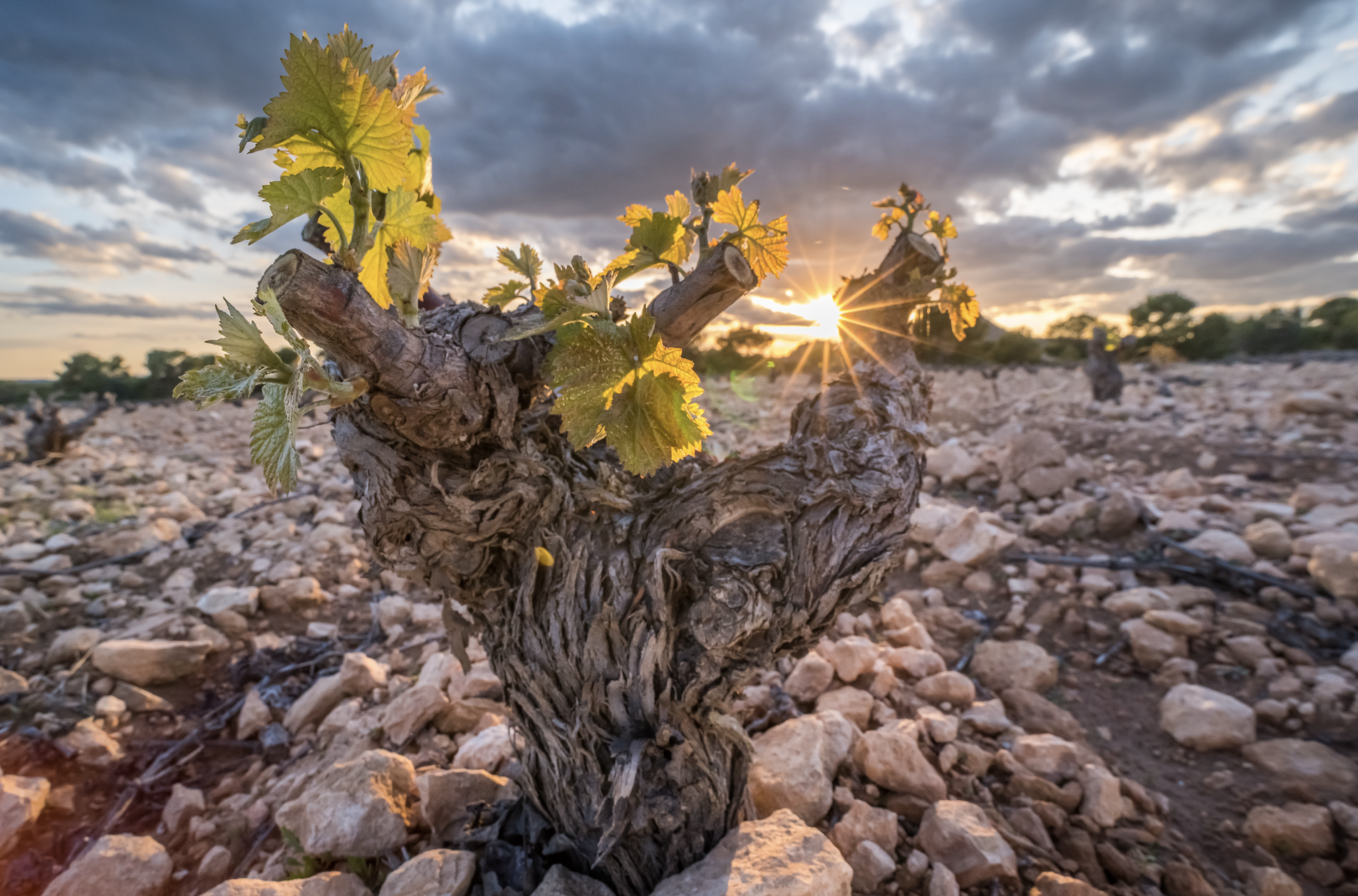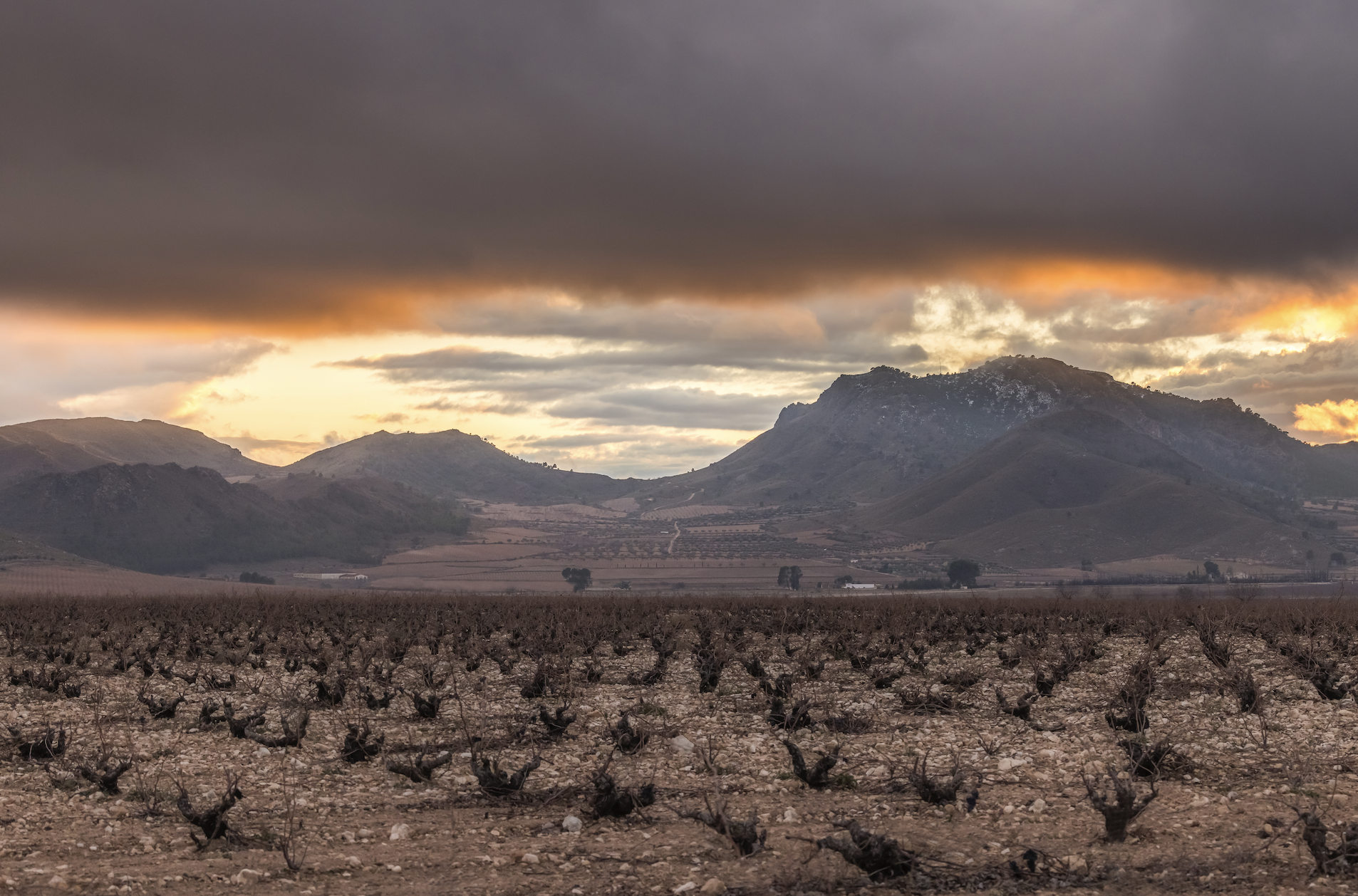Soil for survival: the key to Jumilla’s resilient vineyards
Gnarly old Monastrell bush vine thriving despite Jumilla’s semi-arid landscape.
At the last Old Vine Conference community workshop of 2023, Carolina Martínez Origone, Agricultural Engineer & General Secretary of the Consejo Regulador DOP Jumilla explained how Jumilla’s old vines cope in the arid conditions of the region and not only survive but consistently produce high quality grapes. If you missed the session, you can listen to the podcast recording of it here or read on for a summary by Regional Ambassador for Spain, Anna Harris-Noble.
Jumilla’s unique soils can be linked to both its development as a wine region and the fact that it is home to some of the oldest Monastrell vines in Spain. There’s a great diversity of soils in the area, but the decomposition of the mountains to the north of the region has led to a particularly high proportion of calcareous and limestone materials. There are also some sandy and gravel soils dating back to prehistoric times, when the Tethys Sea covered Jumilla. Volcanic soils are even found in some areas.
At first glance, the blindingly white chalk rocks that you find in many of the vineyards of Jumilla wouldn’t seem like the ideal environment to grow anything, especially when combined with a semi-arid climate that sees searingly hot summers and an almost complete lack of rain. These harsh conditions make growing many crops impossible, but as we know, vines often perform at their best when faced with limited resources. They also have the benefit of making a large part of the vineyards hostile to that most pervasive of vineyard pests –phylloxera. At the end of the 19th Century, when this insect decimated the vineyards of France, Jumilla was one of the areas that cavistes turned to as a source of bulk wines. This led to a boom in commercial wine production, which had existed in an artisanal form in the area for at least 5,000 years.
The inability of phylloxera to survive in these poor, predominantly limestone soils means that some 800 hectares of un-grafted vines can be found in Jumilla. These date back to at least the 1980s, when direct planting without American rootstock was first prohibited, and have been propagated using the traditional technique of layering, or acodo as it’s known in Spain.
The landscape of Jumilla.
In such a dry area, the water-retention capacities of the soil are crucial to ensure the long-term survival of the vines. Many soils are fine and sandy in texture, and although they allow the roots to delve deep in search of moisture, they are known for good drainage rather than their ability to capture water. However, Carolina explained that something like the “botijo effect” occurs, referencing the traditional clay vessels used in this part of the world for keeping water cool in the summer months, which work through a system of transpiration, cooling the water that remains within. In the vineyards, petro-calcic horizons in the soil work in a similar way. These hard calcic layers act as barriers to capillarity, preventing water from evaporating so quickly, cooling the soil and retaining precious moisture during the growing season.
Organic farming is widespread across the region – there is very little disease pressure in such a dry environment – also helping ensure the on-going health of the soil and survival of the vines.
Of course, this combination of soils and climate could not support many grape varieties; there is a clear reason why bush vine Monastrell makes up over 75% of the vineyard. This native variety is particularly well adapted to this area, along with Airén, Garnacha and Garnacha Tintorera, but conditions are such that even drought-resistant varieties planted at very low density only produce an average of 1.5 to 2.5 kg per bush vine, some of the lowest yields on the planet.
The wine world is gradually recognizing Old Vine Monastrell from DO Jumilla as a unique gem, as the region has seen a paradigm shift from rustic, high alcohol bulk wines to high quality bottled wines. Fresher more mineral styles can now also be found that reflect the altitude and chalky nature of the soils.
We’ll be hosting a press, trade and educator visit to some of the region’s most exciting producers this April (2024) including the study of soil pits in old vine vineyards as well as an in-depth seminar with presentations by IMIDA – the Murcian institute for environmental and agricultural research and development - alongside tastings hosted by experts Sarah Jane Evans MW and Amaya Cervera. Please get in touch if you’d like more information:
Email Anna Harris-Noble
Email The Old Vine Conference.
To find out more about Jumilla DO:
jumillawine.us
@jumillawine


